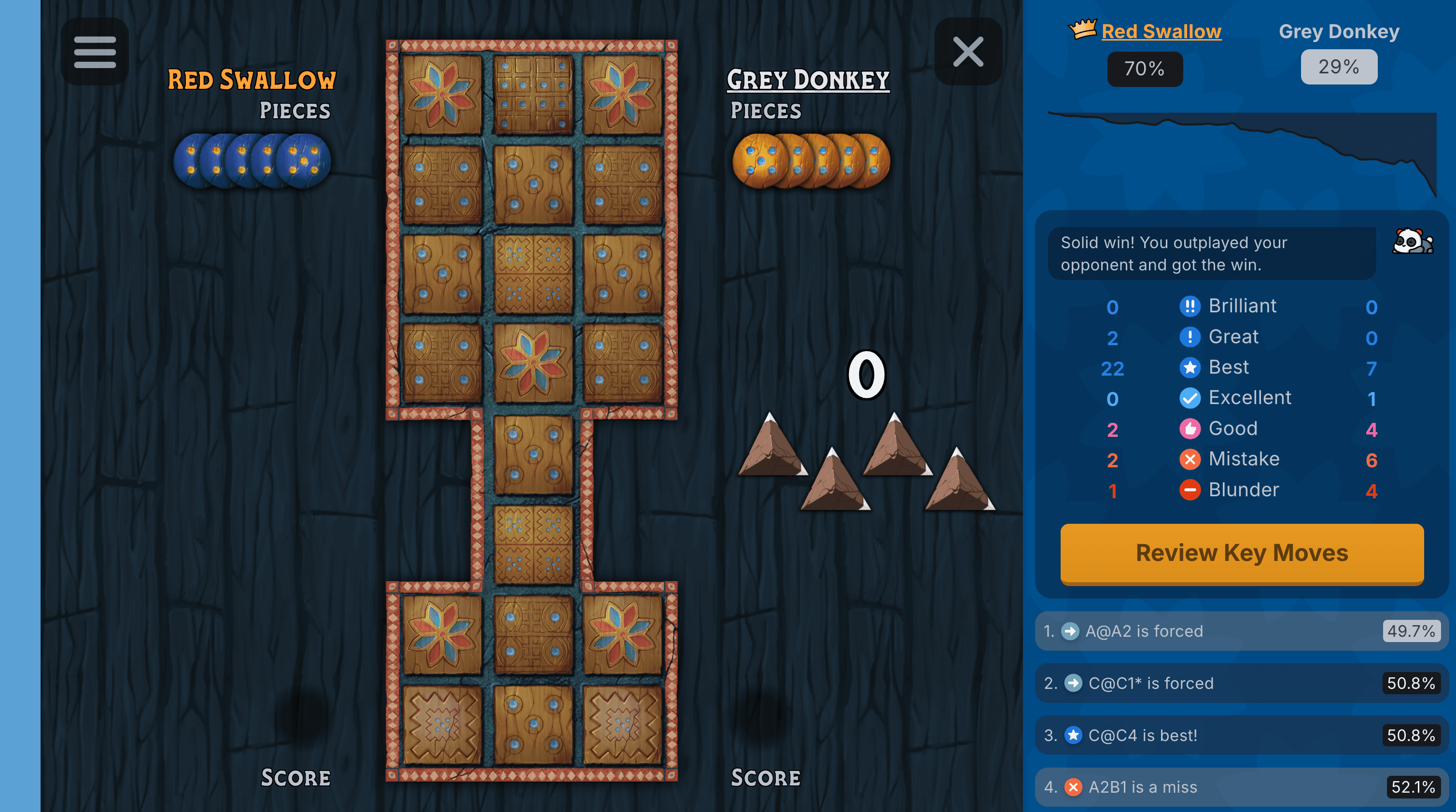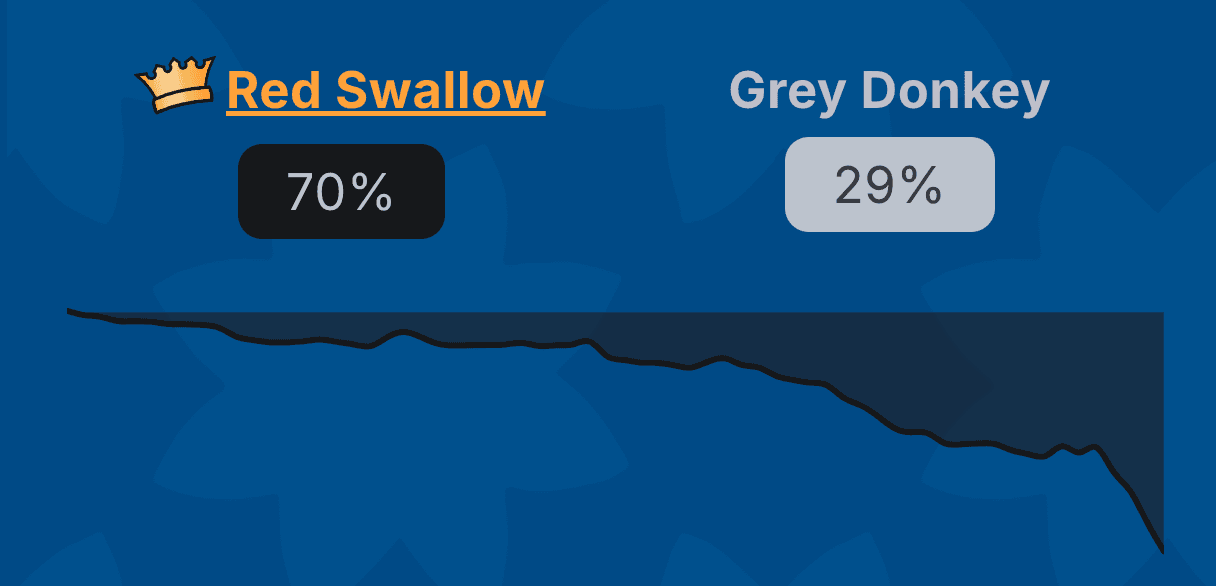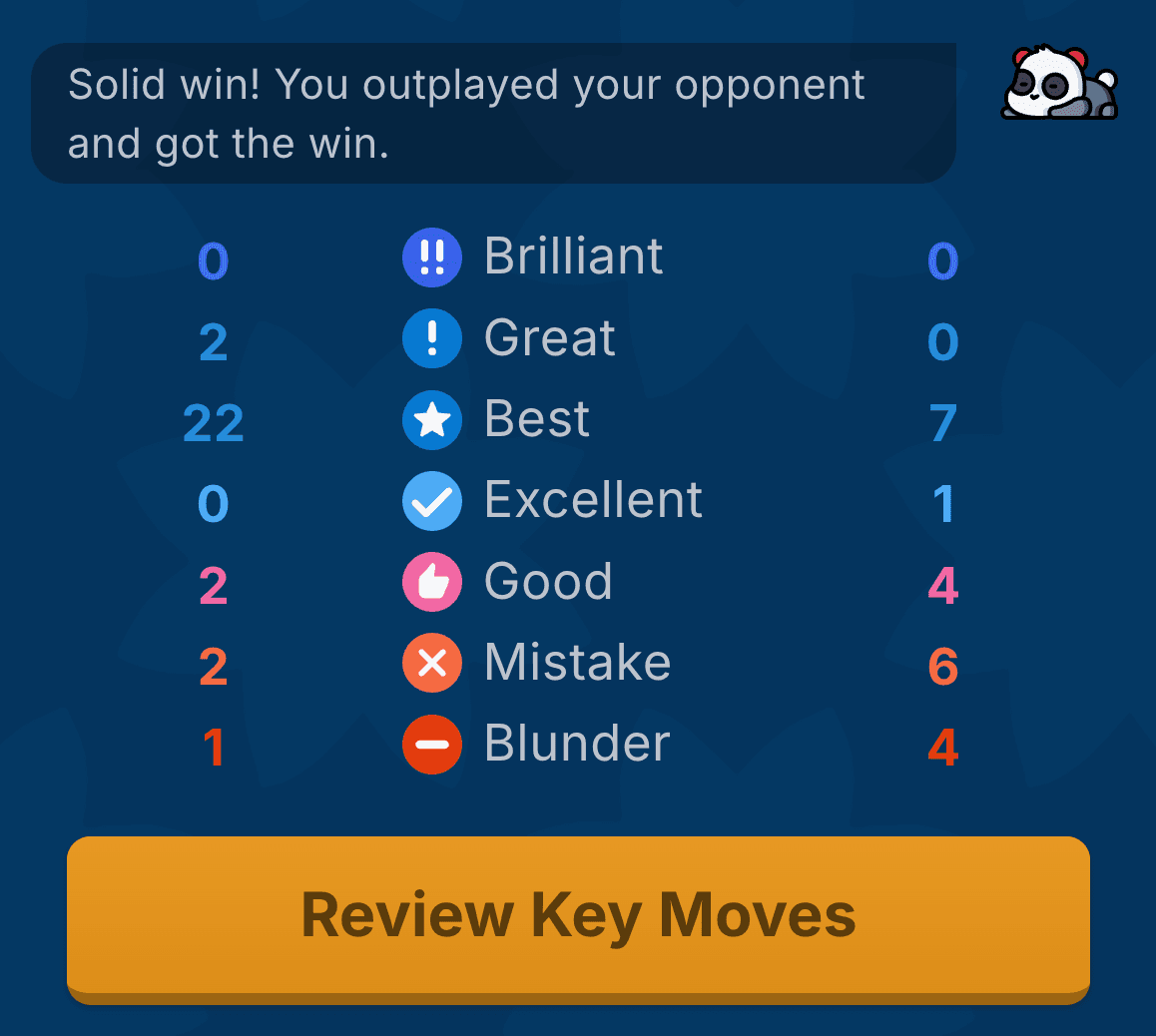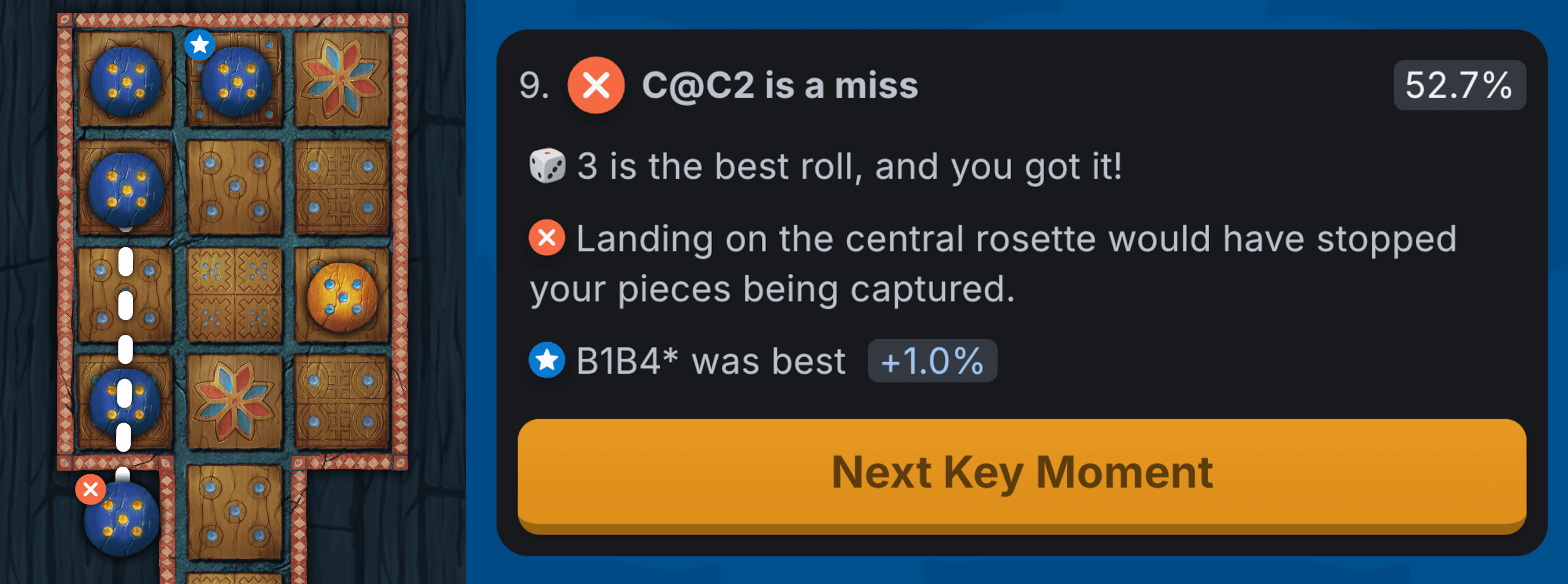How Game Review works 🔬
Our game review feature analyses your moves, highlights your best moments, and suggests improvements.
Under-the-hood it uses our best bot, the Panda, to analyse your game. The Panda plays the game flawlessly, so you can be confident you can trust its judgements on whether moves are good. We know it plays flawlessly, because we solved the Royal Game of Ur.

How can you use the game review?
After you finish a game, click the Review Game button. This will take you to the review for your game, where you will be presented with a wealth of information about how your game went.
What does all the information mean? Let's unravel it.
First, look at the top-right on desktop, or the bottom of your screen on mobile. There, the review introduces the players, their accuracies, and a graph charting the light player's chance of victory throughout the game. The graph falling means dark has a higher chance of winning, and the crown is given to the player who won. 👑

Next, the Panda summarises your game and offers you some key metrics about your moves. Your moves are categorised from brilliant down to unfortunate blunders. I recommend focusing on the extremes: cherish your excellent and brilliant moves and strive to avoid blunders.
Once you are done with the summary of your game, click the prominent Review Key Moves button. Clicking this button will carry you to a specific move to review in more detail. You will be shown moves that the game review thinks are the most relevant for you to learn from.

You will be presented with detailed insights about one of your moves. In the example shown below, a mistake is highlighted to learn from. The Panda suggests that taking the central rosette would have been better than introducing a piece. The board shows this suggestion, with your move highlighted, and the best move marked with a star.
After reviewing your move, you can click the button to progress to the next move that the Panda has selected for you to review. The Panda will usually pick out 6-8 moves for you to review in each game.

How are game reviews made?
We look at every move you and your opponent made, and analyse each of them using the Panda bot. We compare each move you made to the move that the Panda would have made. If you made a worse move, we can then tell you exactly how much your winning chance fell because of your choice.
Once we have used the Panda to identify how good your move is, we then generate a description of why your move was best, and about why you should have made a different move instead. These descriptions are generated by matching what the Panda thinks with English descriptions of moves.
Move Categories
We categorise each of your moves as one of the following:
Brilliant. The rarest categorisation. The brilliant category is reserved for moves that are very hard to spot, and that have a big impact on your game. Brilliant moves are a special type of best move.
Excellent. The excellent category is used for moves that are hard to see. Excellent moves are a special type of best move.
Best. The best category is used when you made the move that leads to your highest chance of winning.
Great. The great category is used for moves that are very close to being the best move. Your chance of winning went down, but only by a small amount.
Good. The good category is used for moves that could have been better, but that don't hurt your chance of winning too badly.
Mistake. The mistake category is used for moves that you should try to avoid making. These moves have a significant impact on your chance of winning the game.
Blunder. The blunder category is used for mistakes that are particularly hurtful to your chance of winning. Players should try to avoid blunders at all costs.
Limitations of the Panda
The Panda plays the game flawlessly. However, that doesn't mean that its moves are always the move you want to make. Sometimes you may want to deviate from what the Panda would play, to take advantage of mistakes that you noticed your opponent makes.
For example, if you noticed that your opponent really does not like to leave the central rosette, even to capture, you can take advantage of that. In this case, you might be more willing to let one of your pieces sit in front of the central rosette, as you are confident that your opponent is not going to capture it even if they could.
The Panda would not take advantage of these sorts of common mistakes that your opponent might make. This is because the Panda always assumes that your opponent will play flawlessly from your current position onwards. Due to this, it will not exploit your opponent's specific weaknesses.
However, don't let this make you think that the Panda is flawed! No, in fact the Panda plays in such a way that it does not have any of these flaws that other players could exploit. That is why you should still strive to learn to play like the Panda! Playing like the Panda will stop your opponents being able to exploit your mistakes.
Want to dive a bit deeper?
We have written quite a bit of material on how we solved the game, and on what this means. Read about how we solved the Royal Game of Ur here.
